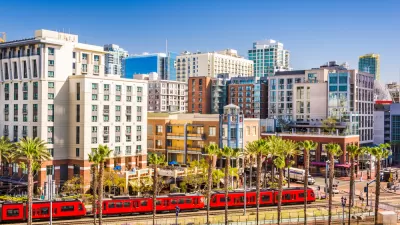With coordinated effort at the local, state, and federal levels, the United States could meet its goal of cutting greenhouse gas emissions in half by 2030.

A news release by Aliyah Kovner touts the results of a new study from Lawrence Berkeley National Laboratory that found that the United States can achieve its goal of reducing greenhouse gas emissions by 50 percent by 2030, “but big commitments will need to be made, immediately.”
Nikit Abhyankar, one of the study’s authors and a scientist in the Electricity Markets & Policy Department at Berkeley Lab, “notes that the most urgent actions will be to double the amount of renewable capacity built each year and transition predominately to electric vehicles within the next decade or so.” Kovner notes that “Reducing GHG emissions by 50% by 2030 would put the United States on a path to limit global warming to 1.5 degrees Celsius, the target scientists say is required to avoid the worst consequences of the climate crisis.”
According to the six techno-economic models analyzed in the study, “The majority of the country’s greenhouse gas emissions come from power generation and transportation, so to reduce overall emissions by 50%, the electricity grid needs to run on 80% clean energy (up from today’s 40%), and the majority of vehicles sold by 2030 need to be electric.”
The study also calls for a “coordinated policy response between states and the federal government.” The authors point out that “Thanks to advances in wind, solar, and energy storage technologies, powering the electric grid with renewables will not be more expensive; and electric vehicles could save every household up to $1,000 per year in net benefits.”
FULL STORY: A 50% Reduction in Emissions by 2030 Can be Achieved. Here’s How

Alabama: Trump Terminates Settlements for Black Communities Harmed By Raw Sewage
Trump deemed the landmark civil rights agreement “illegal DEI and environmental justice policy.”

Planetizen Federal Action Tracker
A weekly monitor of how Trump’s orders and actions are impacting planners and planning in America.

The 120 Year Old Tiny Home Villages That Sheltered San Francisco’s Earthquake Refugees
More than a century ago, San Francisco mobilized to house thousands of residents displaced by the 1906 earthquake. Could their strategy offer a model for the present?

In Both Crashes and Crime, Public Transportation is Far Safer than Driving
Contrary to popular assumptions, public transportation has far lower crash and crime rates than automobile travel. For safer communities, improve and encourage transit travel.

Report: Zoning Reforms Should Complement Nashville’s Ambitious Transit Plan
Without reform, restrictive zoning codes will limit the impact of the city’s planned transit expansion and could exclude some of the residents who depend on transit the most.

Judge Orders Release of Frozen IRA, IIJA Funding
The decision is a victory for environmental groups who charged that freezing funds for critical infrastructure and disaster response programs caused “real and irreparable harm” to communities.
Urban Design for Planners 1: Software Tools
This six-course series explores essential urban design concepts using open source software and equips planners with the tools they need to participate fully in the urban design process.
Planning for Universal Design
Learn the tools for implementing Universal Design in planning regulations.
Clanton & Associates, Inc.
Jessamine County Fiscal Court
Institute for Housing and Urban Development Studies (IHS)
City of Grandview
Harvard GSD Executive Education
Toledo-Lucas County Plan Commissions
Salt Lake City
NYU Wagner Graduate School of Public Service





























